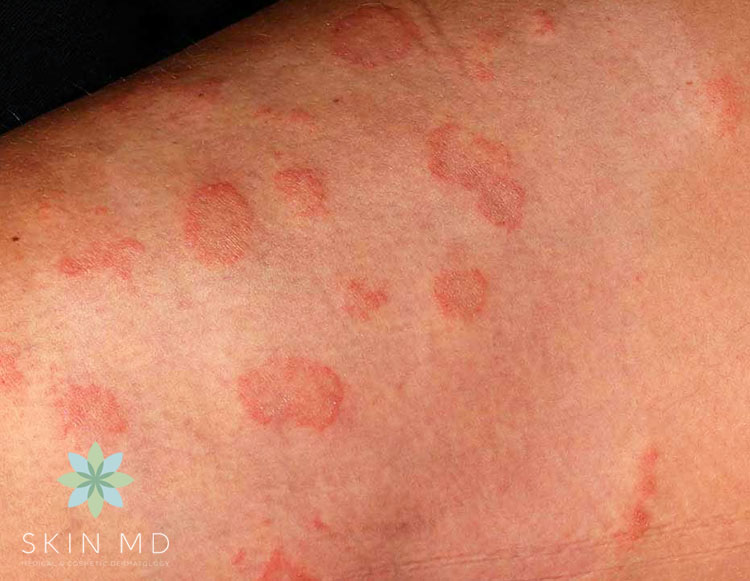Fungi inhabit numerous ecosystems across the globe, playing multifaceted roles in our environment and health. Among their various habitats, human skin serves as a prominent ecosystem for many fungal species. While some fungi are benign or even beneficial, others can lead to skin infections, particularly in susceptible individuals. Understanding the types of fungi found on the skin can empower individuals to prioritize skin health and explore preventive measures.
Fungi can be categorized based on their form, the type of infection they cause, and their characteristics. A prominent classification includes dermatophytes, yeasts, and non-dermatophyte molds. This article delves into these categories, detailing the various fungi that can inhabit the skin.
Fungi 101: The Basic Types
The vast realm of fungi is divided into several distinct types. Understanding these categories lays the groundwork for grasping the nuances of skin fungal infections.
Dermatophytes: The Skin-Loving Fungi
Dermatophytes are a specific subset of fungi that thrive on keratin found in skin, hair, and nails. They can be further classified into three genera: Trichophyton, Microsporum, and Epidermophyton. These fungi typically cause superficial infections characterized by pruritus, erythema, and potential hair loss.
Trichophyton: The Most Common Villain
Trichophyton species are the most prevalent dermatophytes, with Trichophyton rubrum and Trichophyton mentagrophytes being responsible for a significant proportion of cases. These fungi often lead to conditions such as athlete’s foot (tinea pedis), jock itch (tinea cruris), and ringworm (tinea corporis).
Microsporum: The Impediment in Hair
Microsporum species, particularly Microsporum canis, are notorious for causing various tinea infections. This genus predominantly affects hair and can result in tinea capitis, characterized by patchy hair loss and scalp inflammation. It is often transmitted from pets, particularly cats and dogs, to humans.
Epidermophyton: The Rare Genie
Epidermophyton floccosum is less common than the aforementioned genera but can still pose a risk, particularly in immunocompromised individuals. This fungus primarily affects the skin and nails, leading to conditions such as tinea corporis and onychomycosis (nail fungus).
Yeasts: The Unassuming Intruders
Yeasts are unicellular fungi that can also inhabit the skin, with Malassezia being the most notable genus. Although Malassezia typically coexists symbiotically with human skin, it can proliferate excessively under certain conditions, leading to various skin issues.
Malassezia: The Double-Edged Sword
Malassezia furfur is a normal inhabitant of the skin’s microbiota, yet it can cause conditions such as pityriasis versicolor, characterized by discolored patches on the skin. This condition arises when the yeast converts fatty acids into dicarboxylic acids, inhibiting the enzyme tyrosinase in melanocytes, subsequently leading to hypopigmentation.
In individuals with compromised immune systems, Malassezia can lead to more severe infections such as folliculitis, presenting as itchy, pus-filled bumps. This emphasizes the importance of maintaining skin health to prevent opportunistic infections.
Non-Dermatophyte Molds: The Unsung Threats
While dermatophytes and yeasts are the most recognized skin fungi, non-dermatophyte molds can also be of concern, particularly in immunocompromised individuals. As they typically derive energy from organic matter, their presence on human skin suggests opportunism rather than symbiosis.
Aspergillus: An Aspergillosis Anthology
Aspergillus species are filamentous fungi that can cause infection primarily through inhalation, but they may also cause skin infections, particularly in individuals with prior dermatological conditions or immune deficiencies. Cutaneous aspergillosis typically presents as ulcers or necrotic lesions, warranting prompt medical evaluation.
Fusarium: The Fusarium Facet
Fusarium species, commonly found in soil and plant debris, can also infect the skin. Although cutaneous fusariosis is rare, it can occur following traumatic inoculation or in association with systemic disease. The clinical presentation may mimic that of other dermatophyte infections, leading to potential misdiagnosis.
Environmental Factors Influencing Skin Fungi
Understanding the environmental factors that can affect fungal proliferation is vital. Warm and humid conditions create an ideal milieu for fungal growth, which is why certain infections are more prevalent in tropical climates or during summer months. Additionally, wearing tight, moisture-retaining clothing can contribute to fungal growth, exacerbating conditions such as athlete’s foot and candidiasis.
Personal Hygiene and Skin Health
Adequate personal hygiene practices are paramount in curtailing the growth of harmful fungi. Regular bathing, especially in hot and humid climates, can help eliminate excess moisture and reduce fungal proliferation. Choosing breathable fabrics and allowing the skin to air out can further mitigate risks.
It’s essential to recognize the symptoms of potential fungal infections early to seek appropriate treatment. Observations of unexplained skin changes, persistent itching, or scaling should prompt a consultation with a healthcare professional.
Final Thoughts: Navigating Skin Fungi
In conclusion, skin fungi manifest in various forms, each presenting unique challenges for those affected. Understanding the types of fungi found on human skin—namely dermatophytes, yeasts, and non-dermatophyte molds—facilitates a deeper appreciation of skin health and hygiene. By adopting safe practices and being cognizant of the telltale signs of fungal infections, individuals can navigate the complexities of skin fungi with confidence.
Prioritizing skin health is paramount, particularly for the younger generation who engage in diverse activities that may expose them to various fungal pathogens. Armed with knowledge and awareness, one can keep skin flourishing amidst an ever-present microbial world.
